Aka Manto challenges players with permadeath survival horror
So, you reckon you’re a survival horror veteran? You laugh in the face of people who whinge about limited saves in titles like Tormented Souls? Then I give you Aka Manto from Chilla’s Art, a survival horror game with permadeath.
Yes indeed; what we have here is a game in which if you die, you start again. So don’t die. But before we get too much into that, let’s talk a little about what this game actually is.
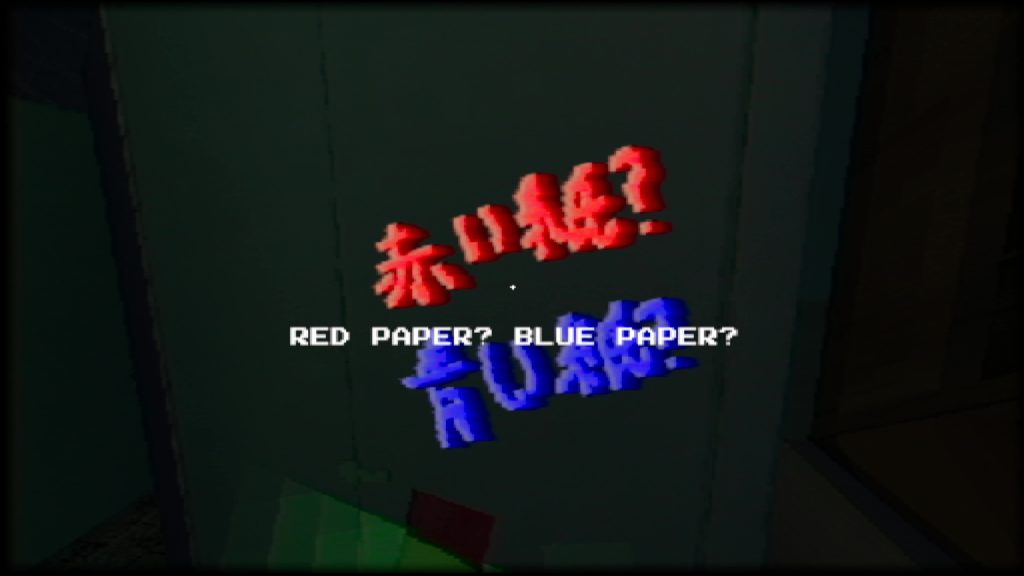
Aka Manto is a game developed by independent Japanese duo Chilla’s art, released in September of 2019. Unlike many of the team’s other games, this is not a “walking simulator”-style horror game in which you explore an unfolding narrative — it is genuine survival horror, in that you have puzzles to solve and enemies to outwit. And, for the most part, you’re completely unarmed against that which awaits you.
Aka Manto is designed to resemble a PlayStation 1-era game, and for the most part it does this extremely well thanks to its low resolution, low-poly graphics — it even goes so far as to warp textures on the walls and floors according to your camera angle.
In fact, the only thing that doesn’t quite feel “authentic” is that the size of the map feels a little too large to be believable for an original PlayStation game; PS1 games with detailed 3D worlds tended to split things up into individually loaded rooms and corridors rather than a contiguous world as we have here. But that’s not really a problem as such; the continuity of the world is part of what makes the gameplay work here.
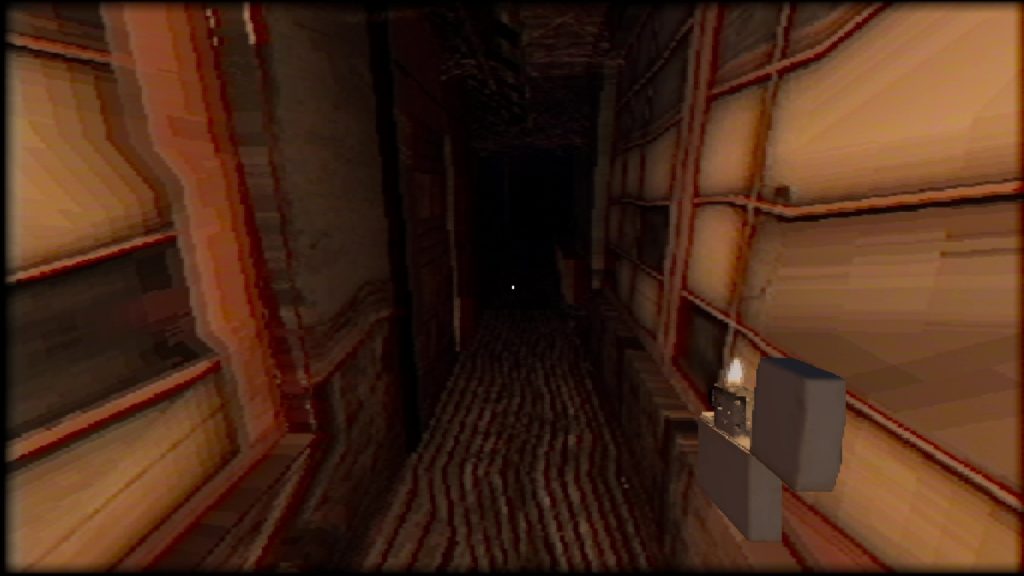
The concept of Aka Manto is that your character is sent into a creepy old abandoned school as “punishment” for something she apparently did to her acquaintances. Upon entering, she does the first thing that comes naturally, which is to visit the toilet — and upon doing so, she retrieves a red slip of paper from the door of a cubicle.
Unfortunately, our heroine is apparently unfamiliar with the Japanese folklore tale of Aka Manto, a spirit that appears to people in public toilets — particularly those in schools. Aka Manto offers the person it appears to a choice between red paper and blue paper; if the victim chooses the red paper, they will be killed through lacerations so severe it will drench their body in their own blood, while if they choose the blue paper they will be killed through strangulation or exsanguination.
The “correct” choice is, supposedly, to ignore the spirit or reject both options, but it’s already too late for our heroine; she’s made her choice, regardless of whether or not it was inadvertent, and now she has to deal with the consequences.
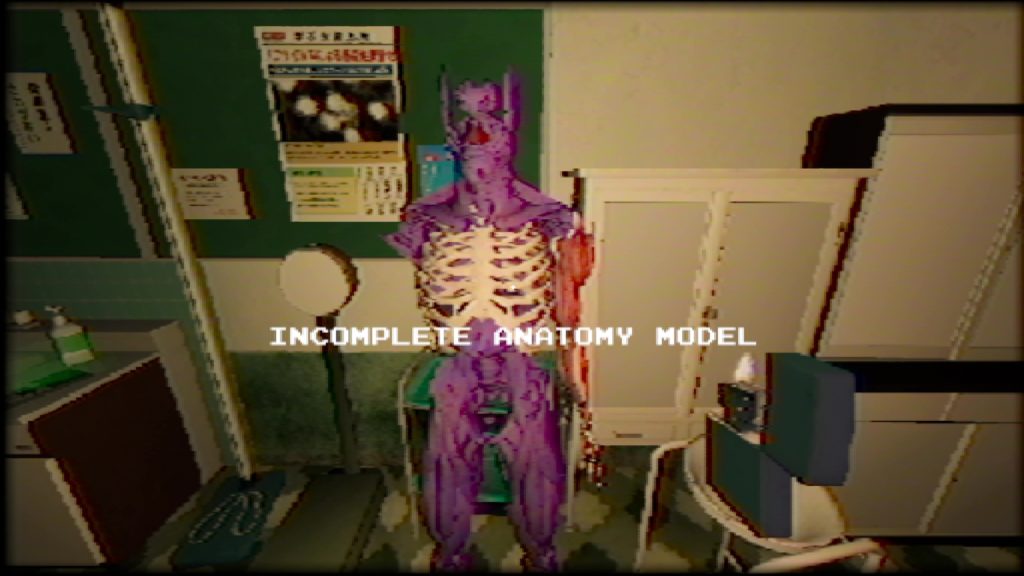
What then follows is a short-form adventure in which your main task is to reach one of two different endings, each of which requires, in simple terms, the gathering of seven specific items from around the school. One ending demands that you locate seven pieces of an anatomical model, while the other tasks you with finding seven coloured pieces of paper, including the red one you find at the beginning. Along the way you’ll also find a series of tape recordings detailing some events which may or may not be related to Aka Manto — you’ll have to investigate to find out.
The game doesn’t actually tell you these details from the outset, so it’s easy to go into the game assuming that you need to complete both collection quests to “win”, but it will save you some time and stress to know that you only need to focus on one at a time. The main reason that pursuing both at once is potentially stressful is because you only have very limited inventory space — you can carry just three objects at once, and you’ll likely want one of those to be a lighter for most of the game, so that you can actually see what’s going on.
As with most classic-style survival horror games, your main mission in Aka Manto involves finding routes around the building in which you find yourself, and unlocking doors. There’s a strong emphasis on negotiating a ventilation system to reach different floors in the school, then using the various places in which you end up to unlock doors and make getting around much easier.
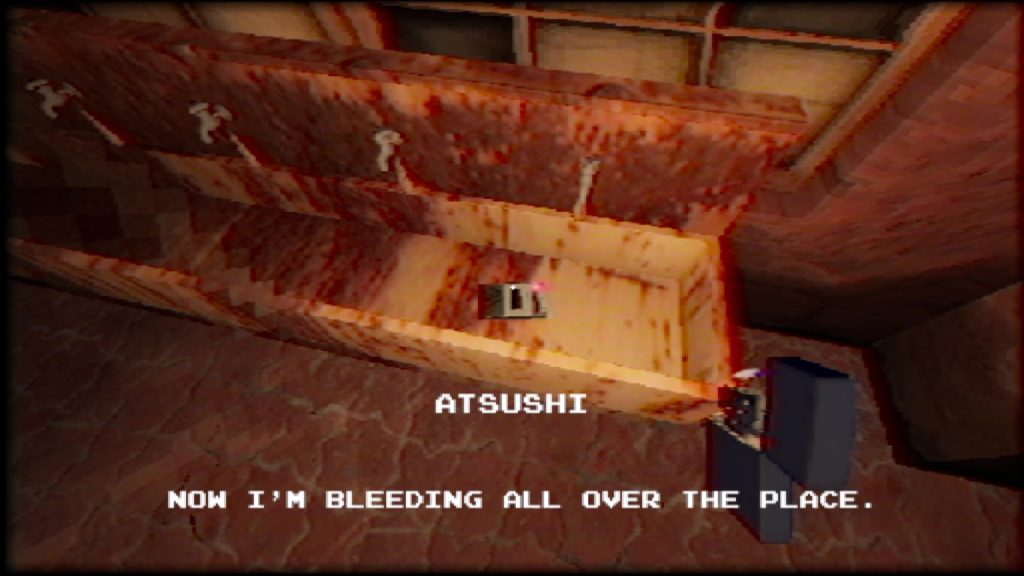
This is partly where the permadeath angle becomes relevant. While some may find it frustrating to have to start the game anew after every death, sensible play will teach you something new every time you try again. You’ll figure out the quickest and most efficient means of reaching your destinations, unlocking all the doors and making your path around the school as efficient as possible — and crucially, you’ll get a feel for the mechanics of how Aka Manto and the various other enemies around the school behave.
Aka Manto is your main threat in the game, but it only shows up after a particular point. Once you’ve reached this point, there are clear audio-visual cues as to whether or not you’re about to be confronted with its screaming, red-cloaked figure — Japanese writing will fill the screen, you’ll hear strange “bubbling” sounds, and at times you’ll see VHS-style distortions on the screen display.
If Aka Manto is pursuing you, you’ll know about it, as the spirit emits a horrifying, never-ending scream and continues attempting to make your insides be on the outside until you shake it off. This can be achieved in various ways, including hiding in closets and lockers (assuming it didn’t see you get in them), making it to that all-important ventilation system, or simply outrunning it.
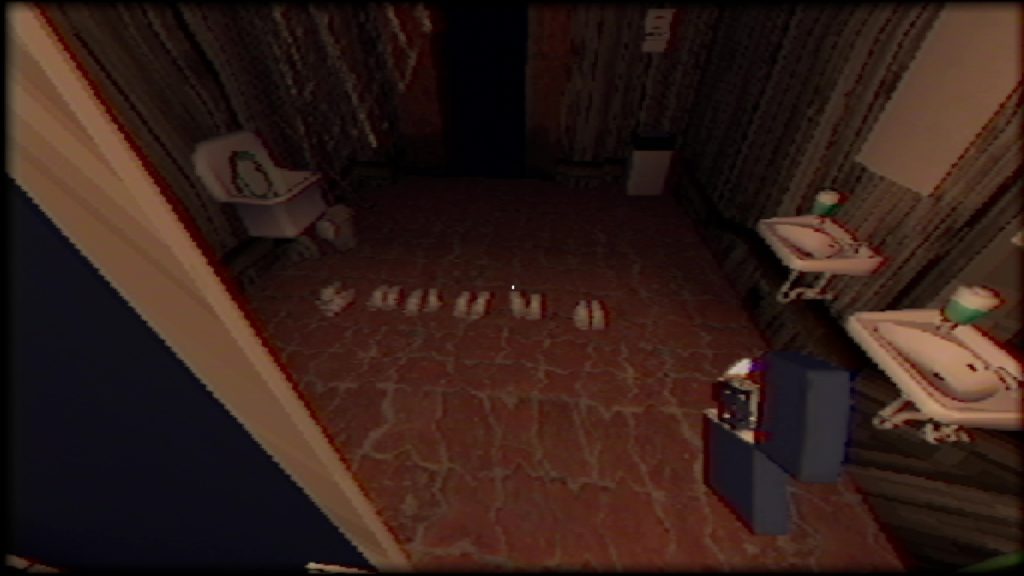
Elsewhere in the game, you’ll encounter floating masks, which are not harmful in themselves, but which do feed back information on your position to Aka Manto, and spiders, which can stun you for several seconds while they nibble on your extremities. The latter are the only enemies that can actually be killed with a spider repellent spray you find — but, of course, this takes up a precious inventory slot to carry around.
There’s also a giant centipede in the ventilation system; this can’t be killed, but it moves on a set route, so it can be avoided fairly easily — properly planning out how you get around becomes very important once you have an idea of what it is you’re supposed to be achieving.
The game features no map function, and that’s entirely deliberate; the sense of disorientation is part of the horror here, somewhat similar to what Chilla’s Art did with the later Inunaki Tunnel. After a while, though, you’ll start to get a feel for how the school is laid out — it’s not actually all that big, and once you start getting the various “locked from the other side” doors open, getting around is fairly straightforward when you’re not being pursued by a screaming monster.
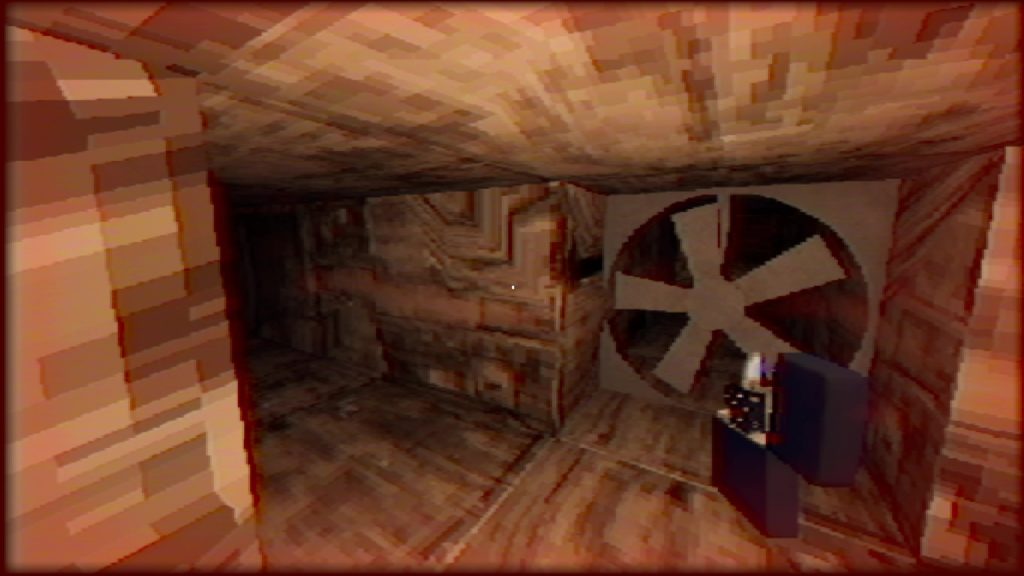
The challenge here, then, is not in solving a lengthy quest that will take you a long time to see through from start to finish — it’s in mastering the mechanics and navigation of the game to ensure that you can keep yourself safe and complete one of the two core “quests” in the game as quickly and efficiently as possible.
And with that in mind, the permadeath side of things is actually rather effective; it’s a similar approach seen in games like Dark Souls, where repetition encourages you to sharpen your skills, spot new things and do a little better each time you try. Eventually, you’ll prevail — just don’t give up if you don’t manage it right away!
Aka Manto is available via Steam.
Join The Discussion
Rice Digital Discord
Rice Digital Twitter
Rice Digital Facebook
Or write us a letter for the Rice Digital Friday Letters Page by clicking here!
Disclosure: Some links in this article may be affiliate links, which means we may earn a small commission if you make a purchase after clicking on them. This is at no additional cost to you and helps support Rice Digital!
- Letter from the Editor: passing the torch - June 30, 2023
- Super Woden GP 2 is looking promising - June 30, 2023
- Inti Creates is making a 32 bit-style Love Live action platformer - June 26, 2023







